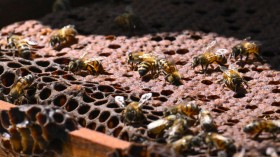A new study published Aug. 14 in the journal PLoS ONE highlights the changing conditions of the tropical forest. Researchers have noticed that the small fragments of tropical forest left after destruction are suffering extensive species extinction.
The alarming study was led by the University of East Anglia (UEA), where they conducted a comprehensive assessment in order to calculate the long-term impact of forest fragmentation and hunting on tropical biodiversity in the Atlantic Forest of eastern Brazil.
They found that the habitat that they thought existed had virtually vanished. "Five large mammal species - tapirs, giant anteaters, jaguar, woolly spider monkeys and white-lipped peccaries - are essentially extinct throughout the whole region," said senior author professor Carlos Peres, of UEA's School of Environmental Sciences in Britain and one of the study's authors.
The effects of the agricultural expansions were so devastating that it transformed the world's tropical forest. There have been scattered reports of large mammal extinctions throughout Brazil, but the conservation value of a rapidly growing number of small forest remnants in highly-fragmented tropical forest landscapes has been hotly debated.
Peres said, "You might expect forest fragments with a relatively intact canopy structure to still support high levels of biodiversity. Our study demonstrates that this is rarely the case, unless these fragments are strictly protected from hunting pressure. There is no substitute for strict protection of remaining forest fragments in biodiversity hotspots like the Brazilian Atlantic Forest. Protection of forest cover alone is not enough to sustain tropical forest species, as overhunting compounds the detrimental effects of small habitat area and isolation."
The researchers investigated a vast area in order to investigate the effects of anthropogenic landscape alteration and other impacts, such as hunting, on the survival of large vertebrate species.
Dr Gustavo Canale of the State University of Mato Grosso said, "We uncovered a staggering process of local extinctions of mid-sized and large mammals. Around 90 percent of the original Atlantic Forest cover (about 1.5 million km) has been converted to agriculture, pasture and urban areas, and most of the remaining forest patches are smaller than a football pitch. On average, forest patches retained only four of 18 mammal species."
His study projects that only protected areas retained the most species-rich forest fragments in the region.
Peres concluded saying, "A growing number of reserves are being degraded, downsized, if not entirely degazetted, so holding on to the last remaining large tracts of primary forests will be a crucial part of the conservation mission this century. Human populations are exploding and very few areas remain untouched by the expanding cornucopia of human impacts. It is therefore essential to enforce protection in areas that are nominally protected 'on paper'. The future of tropical forest wildlife depends on it."
© 2024 NatureWorldNews.com All rights reserved. Do not reproduce without permission.





